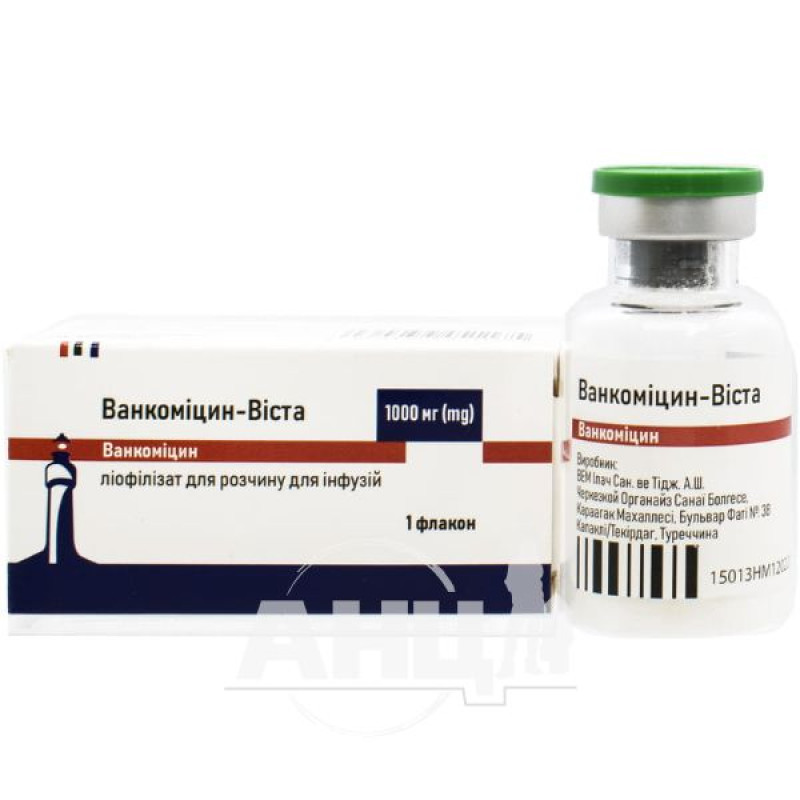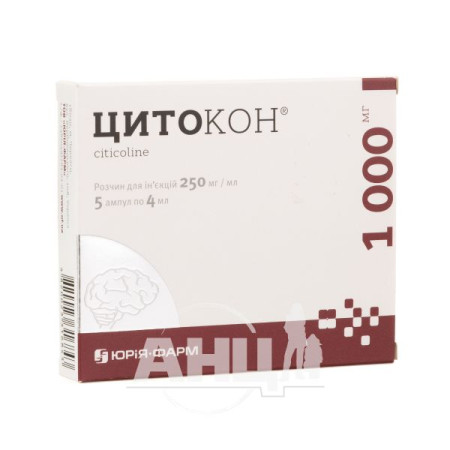Vancomycin-Vista lyophilisate for solution for infusion 1000 mg bottle 20 ml No. 1

Vancomycin-Vista is an antimicrobial agent for systemic use.
Indications for use
endocarditis; sepsis; osteomyelitis; central nervous system infections; pneumonia; skin and soft tissue infections.Warehouse
vancomycin hydrochloride in terms of vancomycin 1000 mg; excipients: sodium hydroxide/hydrochloric acid (possible presence due to the need for pH correction).Contraindication
Hypersensitivity to vancomycin or to any other component of the drug.
Method of application
Adults: 500 mg every 6 hours or 1000 mg every 12 hours. The solution should be administered intravenously by infusion over at least 60 minutes. The maximum single dose is 1000 mg, the maximum daily dose is 2 g.
Children.
Newborns up to 7 days old: the initial dose is 15 mg/kg body weight, followed by 10 mg/kg body weight every 12 hours.
Newborns aged 7 days to 1 month: the initial dose is 15 mg/kg body weight, followed by 10 mg/kg body weight every 8 hours.
Children 1 month of age and older: The usual dose of vancomycin is 10 mg/kg body weight every 6 hours.
The maximum single dose for children is 15 mg/kg of body weight, the maximum daily dose is 2 g.
The concentration of the prepared vancomycin solution for children should not exceed 2.5-5 mg/ml. The solution should be administered over at least 60 minutes.
Application features
Rapid administration of the drug in the form of a bolus injection (within a few minutes) can cause significant arterial hypotension, including shock, occasionally with cardiac arrest, therefore, to reduce the risk of developing hypotensive reactions, the patient's blood pressure should be monitored during administration of the drug.
Vancomycin should only be used intravenously due to the risk of soft tissue necrosis.
To prevent adverse reactions, vancomycin solution should be administered over at least 60 minutes. The risk of thrombophlebitis can be reduced by slow administration of diluted solution (2.5-5 mg/ml) and by changing the injection site.
Adverse reactions related to the rate of drug administration may occur at any concentration and rate of drug administration and disappear after the drug administration is completed.
The drug should be used with caution in elderly patients, patients with hearing impairment, or during concomitant use of other ototoxic drugs, such as aminoglycosides.
Pregnant women
There are no data on the safety of the drug during pregnancy. The use of vancomycin in the first trimester of pregnancy is contraindicated. The appointment of vancomycin in the second and third trimesters of pregnancy is possible only for vital indications, when the expected benefit to the mother outweighs the risk to the fetus, while it is necessary to monitor the concentration of vancomycin in the blood serum.
The drug penetrates into breast milk, so if necessary, its use should be discontinued breastfeeding.
Children
The drug can be used in children immediately after birth.
Drivers
During treatment with the drug, the ability to concentrate may decrease, which should be taken into account when driving a car or performing work that requires increased attention.
Overdose
Overdose is characterized by increased severity of side effects.
Treatment aimed at maintaining adequate glomerular filtration is recommended. Vancomycin is poorly dialysable. Excess vancomycin should be removed by hemofiltration and hemodialysis using polysulfone membranes.
Specific antidote is unknown.
Side effects
Blood and lymphatic system disorders: neutropenia*, agranulocytosis, thrombocytopenia, eosinophilia.
Reversible neutropenia is possible. It usually begins 1 week or later after the initiation of vancomycin therapy or after receiving a total dose of 25 g or more.
Cardiovascular system: heart failure, hypotension, phlebitis, vasculitis, cardiac arrest (these reactions are mainly associated with rapid infusion of the drug).
From the respiratory system: dyspnea, shortness of breath.
Gastrointestinal: nausea, vomiting, diarrhea, abdominal pain, pseudomembranous colitis.
Skin and subcutaneous tissue disorders: pruritus, urticaria, exanthema, Stevens-Johnson syndrome, exfoliative dermatitis, Lyell's syndrome, IgA-bullous dermatitis, toxic epidermal necrolysis.
Storage conditions
Store in the original packaging at a temperature not exceeding 25 °C.
Keep out of reach of children.
There are no reviews for this product.
There are no reviews for this product, be the first to leave your review.
No questions about this product, be the first and ask your question.


